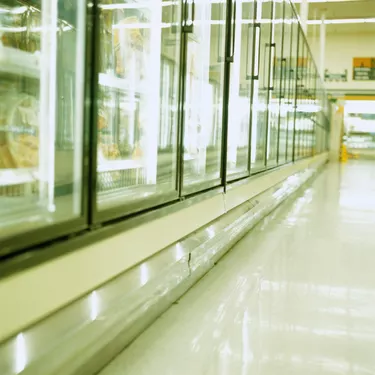
The success of a frozen food business depends on developing a product that holds up well when it is frozen and also developing a business infrastructure that can package, hold and deliver frozen food. In addition, marketing frozen food involves standing out in a fiercely competitive environment because retail freezer space is limited and expensive to maintain. A frozen food business plan should take into account these unique challenges while also charting a business model that can profitably produce and distribute the product.
Step 1
Research the target market for your frozen food product. Develop a clear sense of who would be interested in the product by taking into account how it will be enjoyed, what a customer would need to prepare it and how much it will likely cost at the retail level. For example, if you will be manufacturing affordable ice cream novelties, then your target market will probably be families with children. Use the information on sites such as Valueline.com to find additional information about consumer trends and market successes. Compare your product to other options available in your niche and identify selling points that would entice a consumer to choose your product over the competition.
Video of the Day
Step 2
Document the expenses you expect to incur starting your frozen food business. Include startup costs such as food processor's licenses as well as the expense of outfitting or leasing a commercial kitchen. List the equipment you will need, including freezers, packaging equipment and delivery vehicles. Visit equipment dealers in your area and research prices for your equipment purchases. Also calculate variable costs such as the amounts you will pay for the labor and materials required to produce each batch. Create financial statements showing how much funding you will need and how long it will take and how much product you must sell to pay back the financing you receive to cover your startup costs.
Step 3
Create prototypes of your frozen food product. The prototyping process should involve preparing samples, freezing them in the type of packaging you intend to use and then reheating them and consuming them as a customer would. This process is an opportunity to learn about your potential customer's experience with your product and make changes as needed. For example, if you will be making and selling a frozen dinner entrée but the different ingredients degrade into a homogeneous stew when the product is reheated, experiment with freezing some ingredients separately and adding them at a different stage in the freezing process. Describe the information you learn during this prototyping and development process in your frozen food business plan.
Video of the Day